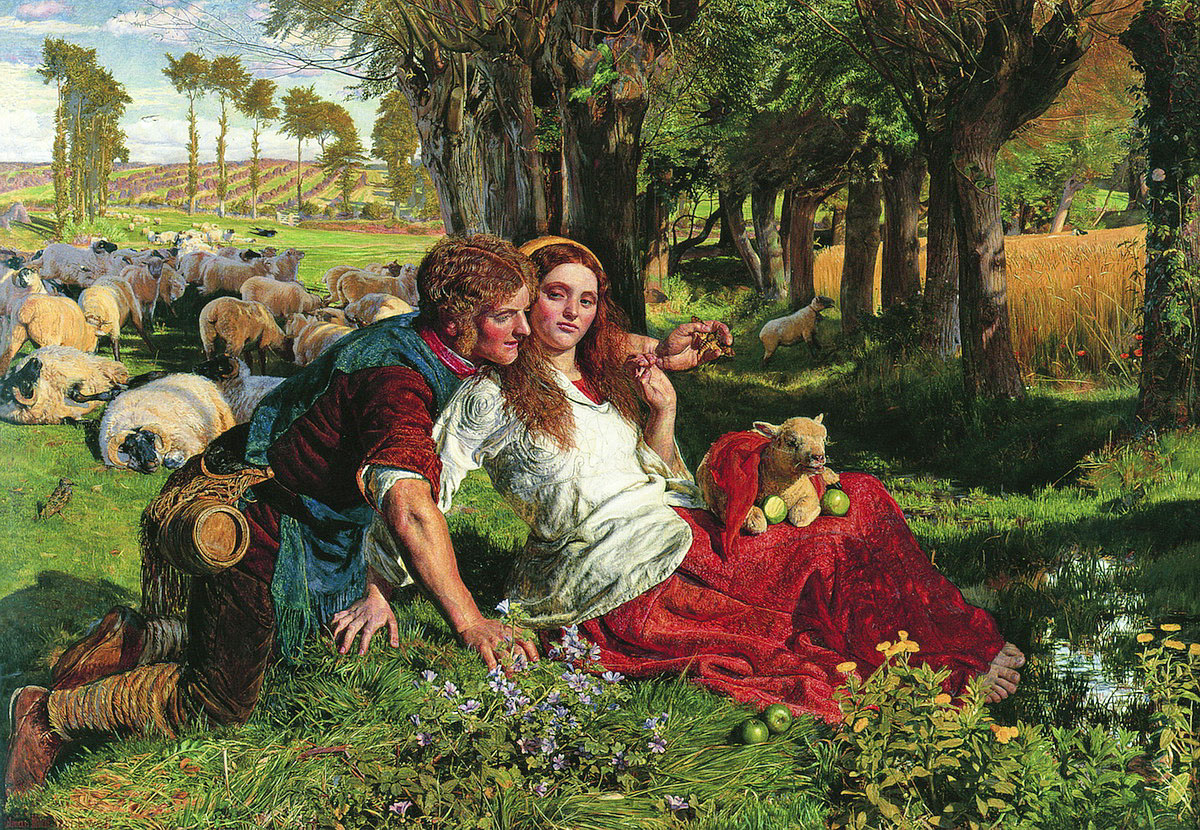Description
Hunt painted the picture when he was living and working in close collaboration with John Everett Millais, who was painting Ophelia at the same time near the Hogsmill River near Ewell, Surrey. Both paintings depict English rural scenes, the innocence of which is disturbed by subtle but profoundly threatening violations of natural harmony. In Hunt’s painting, the shepherd ignores his flock of sheep, who wander over a ditch into a wheat field. This violation of boundaries is paralleled by the shepherd’s physical intrusions into the personal space of the young woman, who responds in an ambiguous way that might be interpreted as complicity or as a knowing scepticism. As he shows her the moth, he places his arm round her shoulder.
Hunt used a local country girl Emma Watkins as a model. She was known as “the Coptic” by the Pre-Raphaelite Brotherhood because of her exotic features. Watkins travelled to London to model for Hunt to complete the picture, but returned home after she failed to establish herself independently as a model.[2] The model for the male figure is not known, but was probably a professional.






